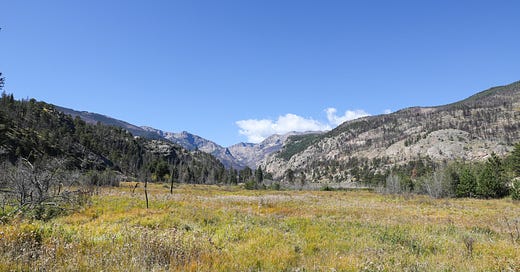I’ve been in a reflective mood, and so if you would allow me another personal post this week, I promise to return to Bible and theology next week.
As a born and bred Kentuckian, I suppose my first awareness of the West came from Fieval. After immigrating to America, that little mouse did the most American thing possible. Fieval went west into the land of cowboys and six-shooters and Sheriff Wylie Burp.
I never actually went to the West until I was an adult, but my most extensive acquaintance with the West came during a month-long road trip in 2022. During this road trip, we spent extensive time in Colorado, Utah, Arizona, California, and New Mexico. Then beyond any expectation we had dreamed up, God called us to serve in Colorado.
While on that long road trip we spent many nights in America’s national parks, we also spent quite a few in both big cities and smaller towns. The big cities of the West—SoCal, Phoenix, Denver, Seattle—have been the primary target of church planting networks ever since church planting became cool in the early 2000s. The strategy is understandable. Many of these cities have grown massively over the past quarter of a century, and these already under-churched Western cities have become even less churched. Following the influence of Young Restless and Reformed leaders of the early 2000s like Tim Keller and Mark Driscoll, church planters have sought to prioritize cities because practically that’s where the people are and also because cities are centers of cultural influence.
However, what struck me during this road trip was the massive need in places you never hear about. After three weeks on the road and being exhausted from sleeping in a tent, we altered our plans and spent three nights in an AirBnB in a normal housing development in Carlsbad, New Mexico. While Carlsbad is well-known for its caves, the town only consists of about 30,000 people, mostly working in the oil industry and ranching. As we avoided the interstates and drove the two-lane highways through the West, we passed through dozens of similar towns filled with ranchers and oilers, many with a significant Hispanic population, and predictably largely Roman Catholic.
These towns don’t have the “cultural influence” of the big cities, and they don’t have the trendy coffee shops where recent seminary graduates feel at home. Yet, these towns often posses much greater influence than first meets the eye. Most of them are regional hubs—the only town with a high school and a Walmart for miles and miles. Beyond the 20-40,000 people who live there are another 50-70,000 people whose lives revolve around the town.
This is not a post about how the missiological emphasis on cities was more of a strategy looking for a biblical justification than a direct application of biblical missiology, although I may write about that one day. Rather I simply want to share what struck me so deeply on that road trip and what I often think back to when driving the backroads of Northern Colorado (which I do quite often because my son Jude loves a good drive)—we need church planters and faithful pastors both in the growing cities and in the regional hub-towns without a hipster coffee shop. Now that I live in the West, it’s my hope that God uses me to see that need met.
As we launch Gateway Seminary’s Northern Colorado teaching site this August, we want to equip gospel ministers for the Mountain West in the Mountain West. If you’d like to join us, visit gatewaynoco.com for more information and to sign up for updates.







So you want to move to Carlsbad, New Mexico? Not yet, please.